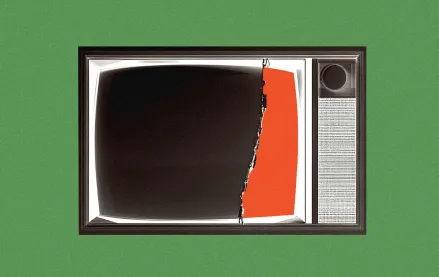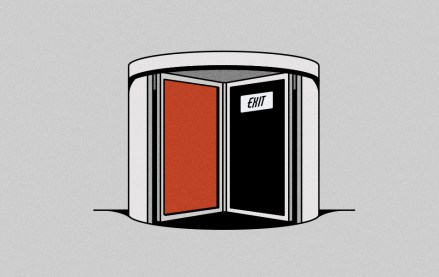Save 50% on a 3-month Digiday+ membership. Ends Dec 12.
Confessions: How an indie agency’s over-reliance on AI drove it out of business

As a Digiday+ member, you were able to access this article early through the Digiday+ Story Preview email. See other exclusives or manage your account.This article was provided as an exclusive preview for Digiday+ members, who were able to access it early. Check out the other features included with Digiday+ to help you stay ahead
Despite success stories at Unilever and Kellanova, skepticism about generative AI is mounting across the wider business world. An MIT study published last week, which estimated that 95% of organizations that tried to implement generative AI into their workflows found zero return on their investment, sent AI-related stocks tumbling.
Small businesses, including agencies of every stripe, are most at risk from the negatives of AI adoption, from rogue use of tools (a recent IBM study found only 37% of organizations are tracking employee use of AI) to the consequences for their business models. Clients have always wanted more work for less money; now they expect agencies to deliver on that promise through technology. But when tools like ChatGPT aren’t up to the task, it’s up to overworked agency staff to fill in the gaps.
In this candid conversation, an indie agency exec talks us through the collapse of their agency, which slid into administration in July after its founder and creative figurehead became convinced that generative AI tools would provide a silver bullet solution for existential business threats.
The agency — a small production shop specializing in animated filmmaking, was the kind of firm found in every ad market on the planet, and there’s lessons in its cautionary tale for the entire ad industry. Now working as a freelancer, the exec discussed the factors that led to the agency being dissolved.
We’ve agreed to not identify them or the agency, and certain parts of the conversation were edited for length and clarity.
What was your role at the agency?
I joined in 2011 as an animator. [The agency] was very small at the time, and was very much built around [the founder] doing the creative work and everybody else kind of in support of that. My final job description was managing senior creative.
We had a team of senior creatives I was leading, who were working directly with clients. We had an illustration team, and an animation team. We were working with really prestigious clients — NGOs, charities, educational organizations, all sorts. It was a fascinating job: you were speaking to experts on early tsunami detection, the circular economy, or reusing food waste to create bio fertilizers and things. Fascinating stuff, very information heavy. Accuracy was important.
[When the call came about its insolvency] I was actually on a camping holiday. I got a call from the boss, saying that the administrators have been called in, and that was it. When it went into administration, the company had 24 staff.
And AI was to blame?
I don’t think the blame can be pinned solely on that. [The founder] didn’t really like people saying, “We can’t take on that project”, or “We haven’t got enough time”.
People were always frustrated with [the founder]. I still had a lot of respect for him, up until maybe a year ago when it started to steadily erode through his response to AI — as a potential threat to the business but also a potential tool, as he saw it, to maybe try and expand. It created a lot of issues.
What caused the agency’s founder to pin his hopes on generative AI?
Part of it was budgets and lower timescales. We were constantly being told that old clients were not willing to pay as much. That had a knock-on effect — that everyone needed to be doing things faster.
I think there was also a sense of remaining relevant. Trying to capture a waning zeitgeist. Being seen as an innovator. I think there was a bit of fear, once [generative AI] seemed able, on the face of it, to be able to create things. And a bit of laziness. Sometimes, it was straight-up corner cutting.
How so?
The first thing that started to creep in was scripting and voiceover. If we were doing a proof-of-concept, I would always record on my phone and do a scratch voiceover. I’d try to give a sort of rhythm and sense of dynamic movement. The rhythm of how sound happens and how speech happens… it’s the lifeblood of animation, really. People started going: “Don’t worry about that. Just get an AI voiceover.” It sucked the life out of a very crucial point in the process and had a sense of polish, of being finished. Clients wouldn’t always realize that it was AI.
People had been writing blogs for SEO reasons, and ChatGPT was now being used for that. [But] it would cite papers that didn’t exist. We were a company that was meant to communicate complex ideas through visualizations. That should have been the center point of the company. It was very concerning that we were putting out blogs that were basically nonsense.
[In 2022] we made the move of employing a full time scriptwriter. It got to the point where that was a bit of a bottleneck. The client work was still going well. We were still doing lots of interesting projects, interesting clients. [But] people started suggesting to the scriptwriter that “We can just get ChatGPT to write it. We could just feed your notes into ChatGPT.” For me, the scripting was sacred. It was incredibly important to do that right and to have the right people doing it. I felt like it was incredibly disrespectful to the talents of this scriptwriter that that was seen as a viable alternative. That whole attitude felt like it was bleeding out into everything that we did.
And in the meantime you’re overworked, struggling to deliver against the projects that have been taken on?
Yeah. Morale was incredibly low. People were then coming to me with concerns, and I was trying to report back up. These tools were not really working. They weren’t really saving us the time that [the founder] thought they were saving. They were causing problems. They were making more work for everybody.
Also — and I find this unforgivable, given how talented a visual artist [the founder] was and how much I learned from him — he was using ChatGPT to generate images to use as reference [and then] draw over the top of it and just go where it led him. He’d stopped thinking about what he was drawing. I noticed it in his work. He had a lovely quality of line… but what was underneath it was dead.
More in Marketing

Pitch deck: How Amazon is recasting Twitch as a core part of its CTV pitch
Amazon is positioning Twitch as a defining asset in its CTV ambitions.

Netflix transforms former mall department stores into experiential venues
The location in Dallas opens this week, and one at the King of Prussia mall near Philadelphia opened last month.

Future of Marketing Briefing: AI has created a new talent paradox in programmatic agencies
The job isn’t execution anymore. AI handles that. The job is judgement.








